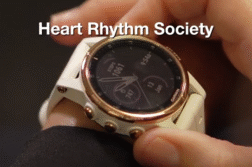PHILADELPHIA, Pa. (Ivanhoe Newswire) — Each year, more than 700,000 people are hospitalized with blood clots. Many times, clots dislodge in the legs and travel through the body, blocking blood flow to the left side of the heart. Now, researchers are testing a first-of-its kind catheter that breaks up and delivers clot-dissolving medication right into the clot.
This is the Bashir Endovascular Catheter, named after Riyaz Bashir MD, FACC, Professor of Medicine, Director Vascular and Endovascular Medicine at Temple University Hospital who designed it.
Dr. Bashir said, “This 50 centimeter blood clot breaks loose and travels to the lung and gets packed into a ten centimeter long blood vessel.” When inserted into a blood vessel, the device expands helping dissolve clots that stop blood flow to the heart.
William Auger, MD, a CTEPH Specialist at Temple University Hospital said, “The right side of our heart is not built to deal with that massive sudden occlusion of the coronary artery.”
For years, doctors used small catheters to dissolve a clot. But the Bashir Endovascular Catheter expands into six tiny catheters to both open the clot and deliver anti-coagulants.
Dr. Bashir told Ivanhoe, “What I wanted to do is some way develop a channel in the middle of the clot. Bring a patient’s own clot-dissolving chemicals into the clot.”
Then, the Bashir catheter quickly delivers anti-coagulants by deploying a kind of spinning basket loaded with meds. Dr. Bashir said, “The basket expands in a spiral fashion. And when it does, that spiral twists and creates a big channel in the middle of the clot.”
A first-of-its kind treatment option designed to restore blood flow-faster than ever. Temple University has just completed an FDA-approved feasibility study to evaluate the safety of this catheter in the treatment of acute pulmonary embolisms. The Bashir™ Endovascular Catheter is currently cleared for the controlled and selective infusion of fluids, including clot-dissolving medications, into the peripheral veins and arteries, such as the legs. It’s also important to note that doctor Bashir has equity interest in Thrombolex, the medical device company developing the interventional catheter.
Contributors to this news report include: Cyndy McGrath, Supervising Producer; Donna Parker, Field Producer; Roque Correa, Videographer and Editor.
To receive a free weekly e-mail on Medical Breakthroughs from Ivanhoe, sign up at: http://www.ivanhoe.com/ftk
MEDICAL BREAKTHROUGHS
RESEARCH SUMMARY
TOPIC: REVOLUTIONARY CATHETER FOR BLOOD CLOTS
REPORT: MB #4667
BACKGROUND: Your circulatory system is made up of vessels called veins and arteries, which transport blood throughout your body. Blood clots can form in veins or arteries. When a blood clot occurs in an artery, it’s called an arterial clot. This type of clot causes symptoms immediately and requires emergency treatment. The symptoms of an arterial clot include severe pain, paralysis of parts of the body, or both. It can lead to a heart attack or stroke. A blood clot that occurs in a vein is called a venous clot. These types of clots may build up more slowly over time, but they can still be life-threatening. The most serious type of venous clot is called deep vein thrombosis.
(Source: https://www.healthline.com/health/how-to-tell-if-you-have-a-blood-clot#abdomen)
PULMONARY EMBOLISM: The cause of a pulmonary embolism is usually a blood clot in the leg called a deep vein thrombosis that breaks loose and travels through the bloodstream to the lung. PE is a serious condition that can cause permanent damage to the lungs, low oxygen levels in your blood, and damage to other organs in your body from not getting enough oxygen. PE can be life-threatening, especially if a clot is large, or if there are many clots. The goal of treatment is to break up clots and help keep other clots from forming. Treatment options include medicines and procedures, such as blood thinners, thrombolytics, catheter-assisted thrombus removal, and a vena cava filter.
(Source: https://medlineplus.gov/pulmonaryembolism.html)
NEW TECHNOLOGY: Riyaz Bashir MD, FACC, Professor of Medicine, Director Vascular and Endovascular Medicine at Temple University Hospital talks about the devices he created, “What we have approval today is for two devices. One is called BEC, which is Bashir endovascular catheter, which has the basket and expands in it. So that is a device that is approved for use in periphery in the iliac, IVCs or arteries. Then there is a BEC N-X, which is a non- expandable version of the basket. But it has everything the same except it cannot expand. And that device is approved for use in the pulmonary artery.”
(Source: Riyaz Bashir MD, FACC)
FOR MORE INFORMATION ON THIS REPORT, PLEASE CONTACT:
Jeremy Walter, Temple University PR
215-707-7424
If this story or any other Ivanhoe story has impacted your life or prompted you or someone you know to seek or change treatments, please let us know by contacting Marjorie Bekaert Thomas at mthomas@ivanhoe.com



